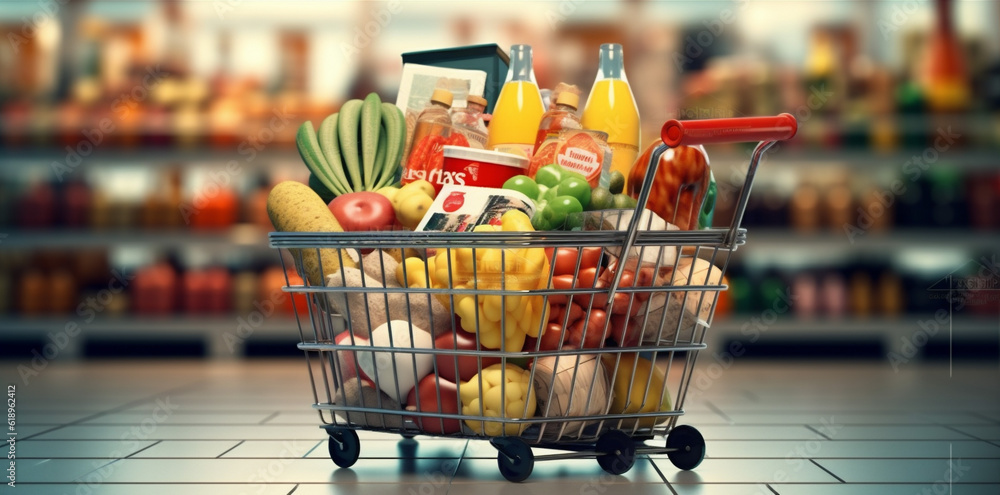I have talked about poor-quality rice (and groundnuts) in the Kenyan market on Twitter at least twice. My most recent post generated numerous responses but the most surprising were the calls to buy directly from Mwea rice farmers. I appreciate the dozens of contacts and shop locations I should try. I know this is coming from a good place, and I’m grateful for that. However, the bigger picture: if you need a plug to be guaranteed safe/fit-for-human-consumption food, then there is a problem.
The Risky Food Items
Seemingly there are two categories of foods. In group 1 we have things like maize, beans, peas, potatoes and most fruit types – you can buy from anyone without worrying about safety. If you need a plug or particular vendor for these, it is to benefit from below-market rates, and not perceived quality/safety concerns. Then there is group 2, things like tomatoes, vegetables, meat and milk products and lately, rice and groundnuts. For this group, you have to actively think about where to get them.
It is risky to buy Group 2 items from just anywhere. And yet without proper records or monitoring data, the quality/safety associated with a vendor is a matter of perception. Let’s take, for example, meat sold in supermarkets. Media reports have revealed that harmful preservatives are applied to meat products. The perception becomes: never to buy meat from supermarkets. But for items like rice, groundnuts and some types of vegetables, the perception is supermarkets are safer options than open-air markets, for example. Without data, we cannot be sure, but there is an assumption that supermarkets have shorter supply chains and can verify and trace the produce from the farm. And here comes the food safety tax.
Food Safety Tax
The Food Safety Tax is not a real tax – but the idea that you pay extra for a guarantee – real or perceived –of safe food. It is when you make a choice to buy groundnuts or rice at the supermarket because they have better quality/safer ones than the kiosk/market closest to you. Soon it spirals to vegetables from only certain locations or milk, meat or beans/grains from a “plug” because for whatever reason you trust them. The safety tax includes paying a premium price from these special vendors, plus the time and delivery costs incurred to get the goods to you.
The Food Safety Tax is a dangerous precedent. It sets the scene for good nutritious and safe food to be attached to a premium price affordable only by a select few. Yes, you can afford to do it now – but will you all the time? For all the foods you consume? Can your loved ones and extended family members afford it? What about the other harms no one has exposed yet but we continue taking them in our foods?
Food has to be safe for everyone, everywhere, all the time, or it is not safe for any of us.
Organic versus Conventional Food
Another way safe/quality food (real or perceived) is attached to a premium price tag is through “organic” food labels. And yes, perhaps it has worked in Western countries, but here in Africa where we have low purchasing power; such a system causes more harm than good. If organic food is safe food, then all food on our table, regardless of price, should be organic. The alternative means that only those who can afford it get safe/quality food. And it is not a whole lot of us. Already, most of us can barely afford nutrient-dense food; safety should not have to come at an extra price. Safe food should never be only for those who can afford it.
The New Pandora’s Box
I hope you see how safe food at a premium price spirals down and opens a new Pandora’s box. For example, those working on “climate action solutions” looking for cheaper food alternatives might worsen food access inequalities. These “solutions” like meat substitutes or lab-grown meat might be cheap enough that they automatically become for the poor who cannot afford “real” food. Real meat and real food if you can afford it, manufactured/over-processed food if you can’t.
If you examine global trends in the last 5-15 years, you will know low-grade versions of the food access inequalities are already happening. The global economic crisis is worsening people’s ability to access food and especially safe and quality food. It is likely to get worse, and the poorest among us will suffer the most. It is why imported rice that is barely fit for human consumption still gets consumers to buy because it is cheap enough.
The high cost of living already sets the stage for this Pandora box. The cost of food is at an all the time high. People are adapting by getting cheaper alternatives, usually nutrient-scarce options. Please look at this Twitter super thread I wrote on the cost of living in Kenya and its consequences on food access.
However, we still have some room before things get out of hand. I hope being conscious consumers might help – that instead of rushing to get a plug to source from, we can ask why the vendor next door is selling unsafe/low-quality food. Where are they getting it from? Who is bringing it to the Kenyan market? From where? Why? Lastly, it is my hope the Kenyan government is more open to sharing the food safety/quality monitoring reports with the public so that we can make more informed choices.

